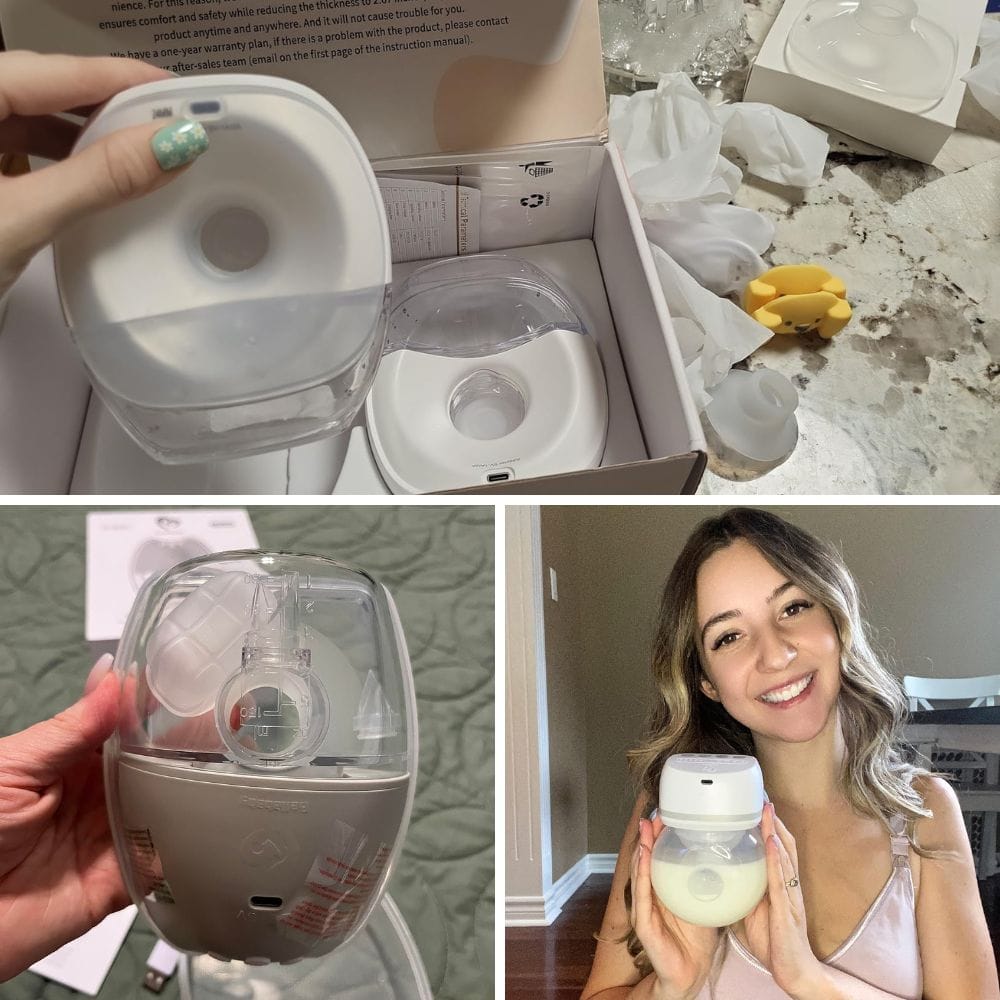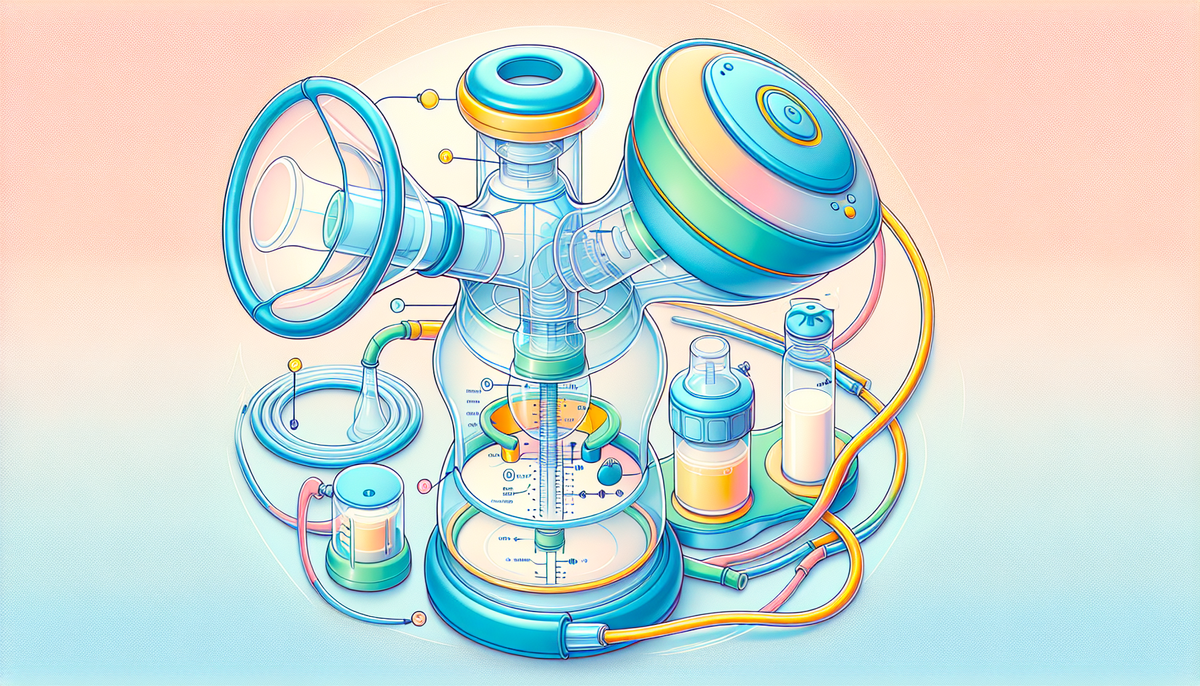Key Takeaways:
- Understanding the correct usage of both manual and electric breast pumps is crucial for effective milk expression.
- Proper cleaning and storage of breast milk and pump parts ensure the safety and health of your baby.
- Establishing a consistent pumping schedule can help maintain an adequate milk supply.
Introduction
Breastfeeding is a natural and beneficial way to provide nutrition to your baby. However, there are times when direct breastfeeding may not be possible, and this is where breast pumps come into play. Knowing how to use a breast pump properly can make a significant difference in your breastfeeding journey. This article will guide you through the process, from choosing the right pump to storing breast milk safely.
Choosing the Right Breast Pump



Selecting the appropriate breast pump is the first step. There are two main types: manual breast pumps and electric breast pumps. Manual pumps require hand operation, making them suitable for occasional use. Electric pumps, on the other hand, are more efficient and ideal for regular use.
Breast pump suction is crucial as it mimics a baby's natural sucking patterns, which helps in the release of oxytocin and effective milk expression.
When choosing a pump, consider your lifestyle and pumping needs. If you plan to pump frequently, an electric pump might be more convenient. For those who pump occasionally, a manual pump could suffice. Hospital-grade pumps are also available for mothers who need to establish or increase milk supply.
Understanding Breast Pump Parts
Familiarizing yourself with the different parts of a breast pump is essential. Common components include breast shields, milk containers, and tubing. The breast shields, also known as breast flanges, come in various sizes to fit different breast shapes and sizes.
Ensure that all parts are clean and dry before use. Proper assembly of the pump parts is crucial for effective milk expression. Refer to the manufacturer's instructions for detailed guidance on assembling your specific pump model.
Preparing to Pump
Before you start pumping, it’s important to create a comfortable and relaxing environment. Find a quiet space where you can sit comfortably. Using a warm compress on your breasts before pumping can help stimulate milk flow.
Washing infant feeding equipment, particularly breast pump parts, is crucial to prevent germ multiplication and ensure the safety of the baby. Wash your hands thoroughly with warm water and soap. Ensure that all pump parts are clean and assembled correctly. Having a glass of water nearby can help keep you hydrated during the pumping session.
Positioning the Breast Shields
Proper positioning of the breast shields is key to effective milk expression. Place the breast shields over your nipples, ensuring that your nipples are centered in the tunnel. The shields should create a seal around your breasts without causing discomfort.
If you experience pain or discomfort, check the fit of the breast shields. Using the correct size can prevent nipple damage and improve milk flow. Consult a lactation consultant if you need assistance with fitting the breast shields.
Starting the Pumping Session
Begin pumping by turning on the pump and adjusting the suction level. Start with a low suction setting and gradually increase it to a comfortable level. The initial phase of pumping mimics the baby’s quick sucking to stimulate milk letdown.
The 'Let Down' phase triggers the release of oxytocin, which is crucial for breast milk production. The 'Expression' phase then helps in efficiently expressing the milk.
Once the milk starts flowing, you can switch to a slower, more rhythmic suction pattern. This mimics the baby’s deeper sucking and helps express more milk. Pump for about 15-20 minutes on each breast or until milk flow slows down.
Double Pumping
Double pumping involves using a pump that can express milk from both breasts simultaneously. This method can save time and increase milk production. Double pumping is especially beneficial for mothers who need to pump frequently or exclusively.
Using a hands-free pumping bra can make double pumping more convenient. This allows you to multitask while pumping, making the process more efficient. Ensure that both breast shields are positioned correctly for optimal milk expression.
Establishing a Pumping Schedule
Consistency is key to maintaining a good milk supply. Establish a pumping schedule that aligns with your baby’s feeding times. Pumping every 2-3 hours can help mimic your baby’s feeding pattern and stimulate milk production.
Pumping breast milk is important to maintain milk supply, relieve discomfort, and prepare for situations where direct breastfeeding isn't possible.
If you’re returning to work, plan your pumping sessions around your work schedule. Pumping regularly can help maintain your milk supply and ensure that your baby continues to receive breast milk even when you’re away.
Storing Breast Milk
Proper storage of expressed milk is crucial for your baby's health. Use clean milk storage bags or containers to store breast milk. Label each container with the date and time of expression to keep track of freshness.
Breast milk can be stored in the refrigerator for up to four days or in the freezer for up to six months. When freezing milk, leave some space at the top of the container to allow for expansion. Thaw frozen milk in the refrigerator or by placing the container in warm water.
Cleaning Breast Pump Parts
Cleaning your breast pump parts after each use is essential to prevent contamination. Disassemble all parts and rinse them with warm water. Use a clean wash basin and mild soap to wash the parts thoroughly.
Avoid using a heated drying cycle for drying pump parts, as it can damage the components. Instead, let the parts air dry completely before reassembling. Regularly inspect the parts for wear and tear and replace them as needed.
Maintaining Milk Supply
To maintain an adequate milk supply, it's important to pump frequently and effectively. Pumping every 2-3 hours can help stimulate milk production. Ensure that you're using the correct breast shield size and adjusting the suction level for comfort.
Staying hydrated and maintaining a balanced diet can also support milk production. If you notice a decrease in milk supply, consult a lactation consultant for personalized advice and support.
Troubleshooting Common Issues
Breast pumping can sometimes come with challenges. If you experience pain or discomfort, check the fit of the breast shields and adjust the suction level. If milk flow slows down, try massaging your breasts or using a warm compress to stimulate letdown.
If you're having trouble expressing milk, ensure that the pump parts are assembled correctly and that there are no blockages in the tubing. Consulting a lactation consultant can provide additional support and guidance.
Using a Manual Breast Pump
Manual breast pumps are operated by hand and are suitable for occasional use. To use a manual pump, place the breast shield over your nipple and squeeze the handle to create suction. Release the handle to allow milk to flow into the container.
Manual pumps require more effort and time compared to electric pumps. However, they are portable and can be used anywhere. Ensure that you have a comfortable and quiet space for manual pumping sessions.
Using an Electric Breast Pump
Electric breast pumps are powered by electricity and are more efficient for regular use. To use an electric pump, assemble the parts and place the breast shields over your nipples. Turn on the pump and adjust the suction level to a comfortable setting.
Electric pumps often have different suction patterns to mimic the baby's sucking. Start with a quick suction pattern to stimulate letdown, then switch to a slower pattern for milk expression. Pump for about 15-20 minutes on each breast or until milk flow slows down.
Pumping at Work
Returning to work while breastfeeding can be challenging, but with proper planning, it is manageable. Inform your employer about your need to pump and discuss a suitable pumping schedule. Find a private and comfortable space at your workplace for pumping sessions.
Bring all necessary supplies, including your breast pump, storage bags, and cleaning materials. Pumping regularly at work can help maintain your milk supply and ensure that your baby continues to receive breast milk.
Pumping While Traveling
Traveling while breastfeeding requires careful planning. Pack your breast pump, storage bags, and cleaning supplies. Ensure that you have access to a private space for pumping during your travels.
If you're flying, check the airline's policies on carrying breast pumps and breast milk. Use a cooler bag with ice packs to keep expressed milk fresh during your journey. Pumping regularly while traveling can help maintain your milk supply.
Pumping for Premature Babies
Mothers of premature babies may need to pump breast milk to provide nutrition for their infants. Hospital-grade pumps are often recommended for establishing and maintaining milk supply in such cases.
Pumping frequently and following a consistent schedule can help ensure an adequate milk supply. Consult with a lactation consultant for personalized advice and support tailored to the needs of premature babies.
Pumping for Twins or Multiples
Pumping for twins or multiples requires efficient milk expression. Double pumping can save time and increase milk production. Using a hospital-grade pump can also be beneficial for mothers of multiples.
Establishing a consistent pumping schedule is crucial for maintaining milk supply. Pumping every 2-3 hours can help ensure that you have enough milk for all your babies. Consult a lactation consultant for additional support and guidance.
Pumping for Milk Donation
Some mothers choose to pump breast milk for donation to milk banks. Donated milk can provide nutrition for babies in need, including premature infants and those with medical conditions.
If you're interested in milk donation, contact a local milk bank for guidelines and requirements. Ensure that you follow proper hygiene practices and storage guidelines when pumping milk for donation.
Pumping for Relactation
Relactation involves re-establishing milk supply after a period of not breastfeeding. This process requires frequent and consistent pumping to stimulate milk production.
Using a hospital-grade pump and pumping every 2-3 hours can help re-establish milk supply. Consulting a lactation consultant can provide personalized support and guidance for successful lactation.
Pumping for Weaning
Pumping can also be used during the weaning process to gradually reduce milk supply. Gradually decreasing the frequency of pumping sessions can help your body adjust to the reduced demand for milk.
Weaning should be done gradually to prevent discomfort and engorgement. Consult a lactation consultant for personalized advice and support during the weaning process.
Pumping for Comfort
Sometimes, mothers may need to pump for comfort, especially if they experience engorgement or discomfort. Pumping a small amount of milk can relieve pressure and prevent complications such as mastitis.
Ensure that you use a comfortable suction level and avoid over-pumping, as this can increase milk production. Consult a lactation consultant if you experience persistent discomfort or other issues.
Pumping for Night Feeds
Pumping for night feeds can help ensure that your baby receives breast milk even when you're not available to breastfeed. Pumping before bedtime can provide enough milk for night feeds.
Store the expressed milk in clean containers and refrigerate or freeze it for later use. Having a supply of breast milk for night feeds can help ensure that your baby continues to receive the benefits of breastfeeding.


How often should I pump to maintain my milk supply?
Pumping every 2-3 hours can help maintain an adequate milk supply. Consistency is key to stimulating milk production and ensuring that you have enough milk for your baby.
How do I clean breast pump parts?
Disassemble all parts and rinse them with warm water. Use a clean wash basin and mild soap to wash the parts thoroughly. Let the parts air dry completely before reassembling.
Can I use a breast pump if I have breast surgery?
Yes, you can use a breast pump after breast surgery. Consult your healthcare provider for guidance on pumping after surgery and use a hospital-grade pump to maintain your milk supply.

Using a breast pump properly is essential for effective milk expression and maintaining milk supply. Whether you use a manual or electric pump, understanding the correct usage, cleaning, and storage practices can make a significant difference in your breastfeeding journey. Establishing a consistent pumping schedule and seeking support from lactation consultants can help ensure a successful and fulfilling breastfeeding experience.










